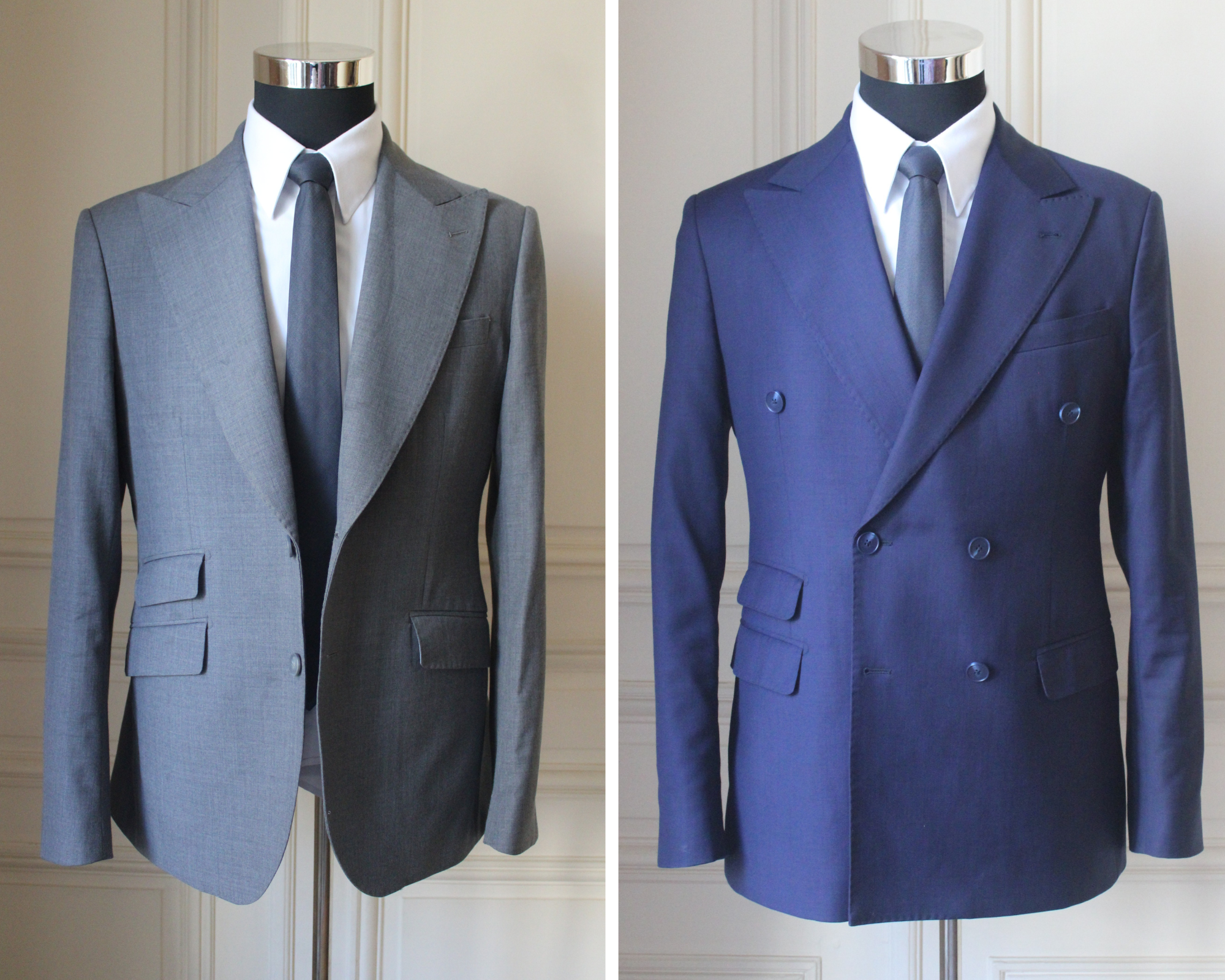There is, in the way a suit is buttoned, a part of its language. The number of buttons, the depth of the crossing, the verticality of the lines: all of this contributes to the look and the message you send. Too often perceived as a technical detail, buttoning is actually one of the most visible signatures of style.
It is in the world of bespoke tailoring that these choices make the most sense: the height of the button, the angle of the line, or the length of the jacket are adjusted to the millimeter to flatter the silhouette and reflect your role. So, which style to choose?
The straight 2-button suit
Modern versatilityBy far the most common, it is the international standard for professional environments. Two buttons are enough to create a clear line, neither too formal nor too casual. The proportion of the lapel finds a natural balance.
To be favored if:
- You work in a classic business environment
- You are looking for a versatile suit, from client meetings to internal meetings
- You want a modern and timeless silhouette
The double-breasted suit
Assumed authorityHistorically military, the double-breasted suit (4x2 or 6x2) broadens the shoulders and strongly structures the silhouette. It embodies authority and presence, especially in decision-making contexts. More demanding to wear, it gains ease when tailored, as the balance of the flaps and the tension of the crossing must be impeccable.
To be favored if:
- You have responsibilities and want to assert your stature
- You like structured and elegant silhouettes
- You are looking to stand out in a formal setting
The final word
Choosing your buttoning is choosing your register. Versatility, classicism, or authority: each option has its own language. In the Hamel configurator, you can visualize these styles and find the one that speaks best for you.


Share:
Which setback to choose? This detail that speaks for you